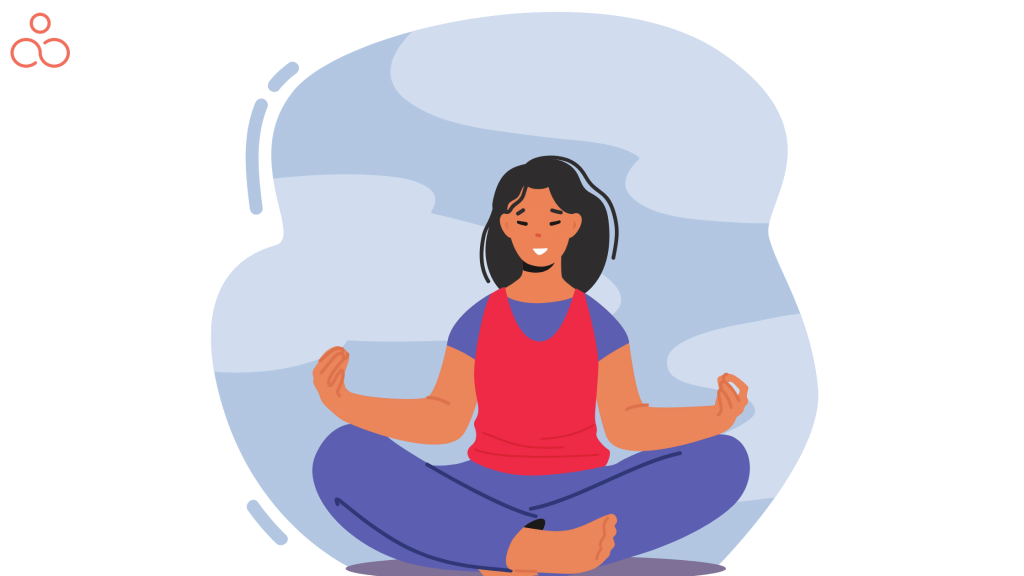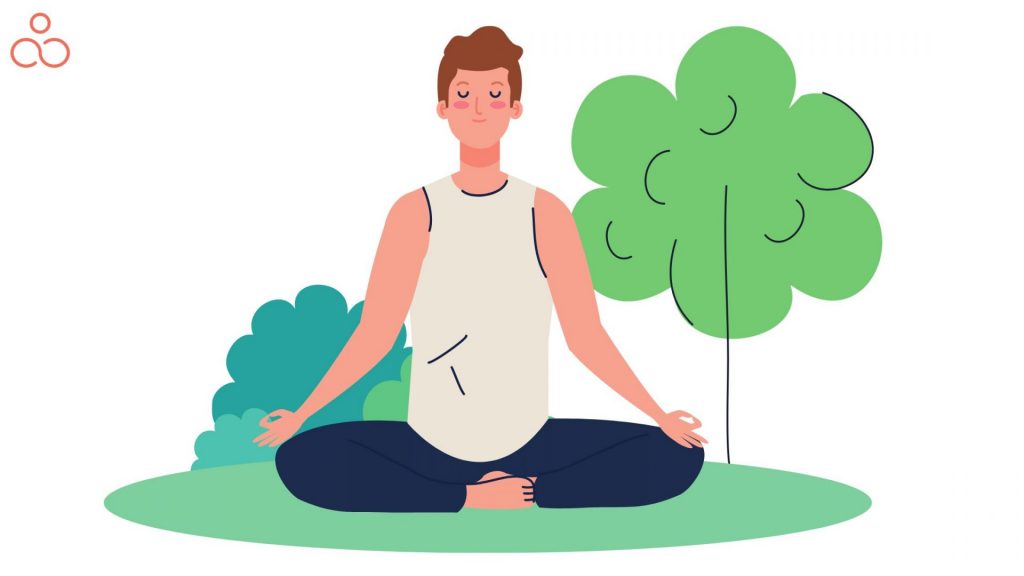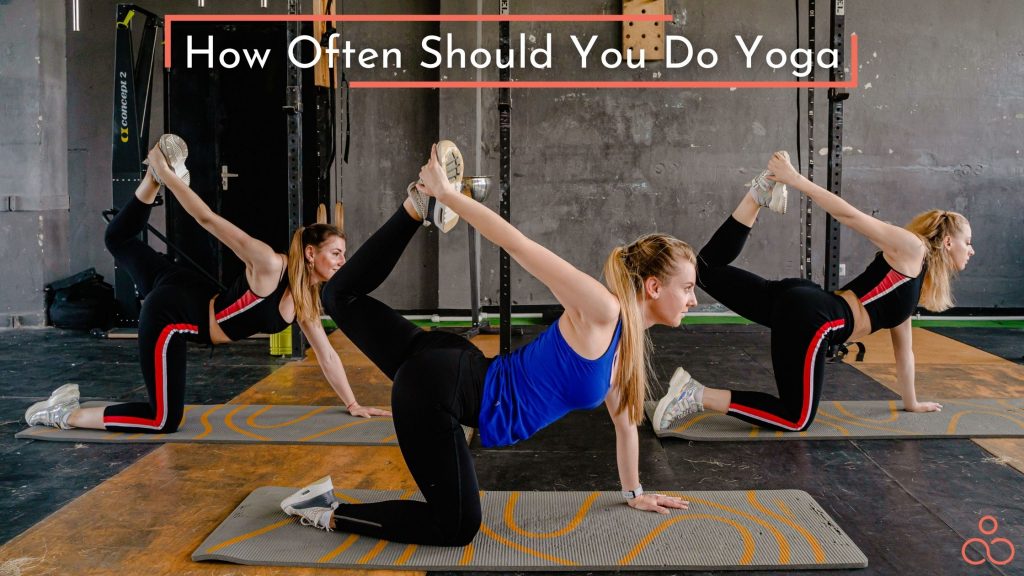Making yoga a part of your life is probably the best advice you’ll ever receive. It is an incredible tool that is filled with health and wellness benefits. Now, have you ever come across any trendy Instagram posts with fancy arm balances, headstands that have intrigued you to jump in feet-first? Well, we might all wish to effortlessly get into an asana, but we often fail miserably. You’re not alone; most of us have been there. So here’s the big question: If you want to become a full-blown yogi, how often should you do yoga per week?
Incorporating Yoga into Your Life

The rule of thumb in incorporating yoga into your life truly depends on your individual purpose. Why did you choose yoga? You have to ask yourself this question to determine your expectation in terms of outcome. What are you trying to achieve at the end of the day? Too many questions? I thought so! Let’s slow down here.
There are many reasons for someone to feel enthusiastic about incorporating yoga into their life. The reason could be as simple as achieving a certain fitness level or improved breathing techniques. But whatever the reason may be, the number of times you hit the mat in a week matters depending on the results you are looking for. Regular practice is definitely a key player as it trains your body to get used to the practice and get the desired results. So how often is too often?
What Are Your Yoga Goals?

As we know, yoga can be a life-altering experience, both physically and mentally. That’s the beauty of yoga. Many of us seem to have a results-oriented mindset such as being able to do a reverse or back-bend pose easily after a few yoga sessions. It’s not that simple. Results will only show when you are practicing religiously and patiently. Yes, of course the frequency of your practice will determine how quickly you get there—but the frequency can only be determined once you have a clear understanding of your fitness goals.
Determining Your Desire
Let’s simplify it for you. There are certain factors that need to be identified while you are on your yoga journey. This will help you understand how much time and effort is required to reach that level. Your yoga practice is entirely dependent on the following four factors:
- Fitness and Lifestyle Goals: Yoga can meet all your fitness goals. Let’s start there. But there are different types and forms of yoga that are designed to meet different fitness goals. Many people feel that yoga does not serve the same purpose as an intense workout like HIIT ((High-intensity interval training), cardio, and strength training. The truth is that the physical aspect of yoga can be just as rewarding—but only if you are practicing the right form of yoga. To be more precise, if your goal is to burn calories, practicing restorative yoga will not give you results. But if you choose Vinyasa, you’ll see results sooner. Basically, it depends on the type, intensity, and frequency of your sessions.
- Current fitness level: If you are not new to the world of fitness, you will have an advantage. Your body is already used to active workouts. For example, if you work out frequently, you will probably aim for 3-4 sessions per week, but again it depends on the type and intensity of the yoga. For instance, if you are lifting weights, you probably need to incorporate a gentle form of yoga-like Hatha or Yin that helps to increase mobility, flexibility, and activates muscles and tissues. This will balance your rigorous training session by allowing your body to stretch and connect with your body flow. It is also a great way to cool off your body through breathing exercises. If you are into cardio, it’s ideal to finish off your workout by practicing some flexibility poses to stretch it out.
- Your workout history: Is your body used to working out for longer stretches? If you are only beginning to consider getting into the world of fitness, then take it easy and slow, since you have to prepare your body before jumping into long and rigorous yoga sessions. On the other hand, you could have a history with other forms of exercise but now want to explore yoga to increase flexibility. It could be just as simple as wanting to shift slightly from your regular workout regime. Your workout history will also be a deciding factor of what form and frequency your yoga sessions should take.
- Mental and physical well-being: Practicing any form of yoga is known to be beneficial to mental and physical well-being. Some are high-impact forms that help with muscle tone, weight loss, and flexibility, while some focus on low-impact activities like breathing, positive mind, and soul. The time and length of your yoga session will depend on your personal choice and purpose. No matter what you choose, all forms of yoga are aimed at developing harmony in the body and mind. Now you could be wondering, is 15 minutes of daily yoga enough? Let’s help you identify your desire before you can decide how long and frequently you should be practicing yoga.
Calmer Mind
Is your goal to achieve a calmer mind and reduce stress and anxiety? Then your go-to form should be Pranayama, a form of yoga that focuses on breathing techniques for physical and mental balance. You could also combine it with Sadhana, a form of meditation. Well, most yoga forms are extremely helpful to reduce stress and anxiety, perhaps trying out Yin yoga could also be beneficial to you. The time of the yoga sessions could be daily, as long as you are not overdoing it. It is also a great tool that can improve your sleep pattern immensely. Try short 10 minutes sessions before bedtime to see great results.
Better Balance
In order to create and cultivate better balance, practicing regularly holds the key to combining your muscle engagement and mental focus. It increases proprioception, which is the ability to control your body and its movements. Dedicating 30 minutes of yoga to your lifestyle will improve your physical balance on the mat.
It is also important to focus on your postures to achieve improved balance. In fact, bad postures can lead to knee injuries and back pain. Therefore, if you try to be consistent and ensure that your muscle alignment is correct, you will slowly begin to enjoy the harmony of your body’s ability to balance.
Core Strength
If you are thinking of turning to yoga for a cross-training purpose, you have to be careful about how you are combining your routines. Intensive workouts on our muscles need ample recovery time in between. You have to allow your body to repair and build. If you are weight-lifting or doing strength training, try to refrain from doing intense yoga; rather use yoga as a tool to relax your worked-up muscles.
Otherwise, you could end up with injuries. We strongly recommend sticking to 2-3 weekly low-impact sessions if your goal is to gain muscle and strength. Perhaps Yin yoga, gentle Hatha, or even a restorative session will give you ideal results. It will do the work of relaxing your tight muscles and help with better flexibility.
On the contrary, if yoga is the sole form of strengthening your muscles, then practice regularly with power yoga, power Vinyasa, or Ashtanga.
Flexibility
Yoga is tremendously helpful for increasing flexibility. We suggest you practice 3-5 times weekly to get your flexibility game on point. You might also want to consider practicing on alternate days, as your practice will be more effective to reduce muscle soreness. Yoga helps with the overall health of your back and eases your pain. It’s not only good for back pain; it has been a great source of pain reliever for arthritis, fibromyalgia, carpal tunnel syndrome, and other chronic pain.
Back Pain/Treatment
Practicing asanas has been the longest-standing treatment for any back and spinal injury, spinal disks in particular. The compression on the nerves that occur due to bad posture or injuries often leads to severe back pain. Yoga movements and poses help to decompress and recover. Poses such as backbends, forward bends, and twists are the most effective poses that help to keep your injured disks supple.
Weight Loss
Yoga isn’t your typical active and intensive workout session, but that does not mean that you are not able to lose weight. Your concerns about how often you should do yoga for weight loss are easy to address. There are active, intense styles of yoga that help you burn calories, tone muscles, and increase metabolism. Ashtanga, Vinyasa, and power yoga are the best forms for high-impact physical results. You may even consider hot yoga, which is the most impactful in terms of activating your muscles and strength. There are a few factors that you might want to consider if your goal is to lose weight.
- You have to revisit your diet chart in order to create a calorie deficit to lose weight. You have to eat less than your body burns.
- Your diet is key – focus on a healthy nutritional diet if you want to see yourself lose those extra pounds.
- Just to make it clear – if you are comparing yoga to other forms of exercise for weight loss, then yoga is not the most efficient one out there. Other forms such as running, aerobics, swimming, dancing – exercises that focus on cardio and active movement burns more calories.
- There’s no reason to walk away from it – as it can work out to be a successful weight loss journey for you, only if you commit to regular Vinayasa, Ashtanga practices along with a strict diet.
- We recommend you to work out at least 3 – 6 times a week with a 1 hour duration. Remember to listen to your body in between. Rest it out if you have to.
Get Ripped
It’s quite common to underestimate the power of yoga when it comes to people who like to see the results to believe it. For example, many want to begin their fitness journey to have washboard abs, toned muscles or get ripped. Yoga is no exception – it is infact a great tool for achieving all those, given that your diet and training frequency complement each other. You will obviously need to acquire a lot more knowledge on your calories intake. Practicing yoga can feel very challenging when you are on a calorie deficit, but if you do it smartly, you’ll meet your desired goals at the right time. We recommend you to develop a routine based on restorative yoga for 2-3 times a week.
Having said that, if yoga is the only form of exercise you are counting on to get ripped, then we recommend power or vinyasa. It will focus on all your body muscles with different asanas, postures rapidly – enhancing your cardio levels. You can also look into a mix and match yoga routine that is particularly designed to burn calories, improve strength, and tone your body.
Pregnancy
If you are a regular yogi, it’s still safe for you to keep practicing. But be mindful about your belly. You should definitely avoid a few poses such as cobra pose, backbends, or lying on your back poses after about 18 weeks into your pregnancy. There are some amazing benefits to practicing yoga (basic yoga poses, breathing techniques, etc.) that help prepare your body for labor.
It is common to face back pain during pregnancy, so bridge pose and cat-cow are examples of pain relievers as well. We strongly recommend you visit your doctor before trying out yoga poses. Even if you are not a newbie, please make sure your doctor has given you the go-ahead before you return to your practice.
How Do You Know If Your Routine Is Right for You?

Arriving at a routine that benefits you mostly depends on your yoga goals and current fitness level. If you want to practice yoga as an addition to your physical training, you have to decide whether you want to incorporate it before or after your training. Some people like to prepare their bodies before weight training, and there are others who like to cool down and finish off with a yoga routine.
It’s completely fine if you are in the trial and error stage, where you are still figuring out what works best. It also depends on your schedule. If you are a morning person, you can start your day by rolling out your mat for some energizing morning yoga. Whatever you choose to do, just remember to stay persistent. Finding your pattern will be easier if you continue to stick to your yoga practices.
Finding Your Frequency
Honestly, most practitioners swear by 3-5 times weekly sessions for steady progress. For your overall health improvement, some yogis practice more frequently. There are people who start every single day with yoga.
If you are on a tight schedule and are only able to practice once a week, it’s still fine. But the results may not be as visible compared to someone who practices daily. The point is, you are free to choose what works for you mentally and physically. Just ensure that you are maintaining proper postures and alignment to prevent muscle, joint, and ligament injuries. Doing too much too rapidly could lead to injuries. Give your body the time to adapt to the yoga routine you are trying to imply.
Based on Your Goals
The number of times you practice should meet the goals you have set for yourself. If you are aiming to build strength and promote weight loss, the more the better, but stay away from overdoing it. The best way to go about it is to stick to a routine. Results will follow.
Join a Class
How often to do yoga as a beginner can also be regulated by joining a yoga class. To find your rhythm and frequency, you can always try a class, both offline and online. Practicing in a studio with other people and an instructor monitoring your poses to guide you can do wonders. You can take advantage of learning from an experienced teacher, gathering your motivation to find your purpose in yoga. You will also end up making new yogi friends—all you need to do is choose a class that suits your schedule, budget, and lifestyle.
The Time-length of Your Practice
This totally depends on you. The practice session can vary from a 15-minute quick session to a full-fledged 60-minute practice. Honestly, it’s about incorporating it into your life to ensure that you are able to do it regularly. There’s literally no right or wrong here. Someone who is busy during the week may only have 15 minutes before they start their day. It makes a lot of sense for them to practice 15 minutes of yoga every day as they are not able to commit to longer sessions during the week.
For example, it could be a 15 minutes power yoga session that has a lot of impact in terms of body flow, flexibility, and even weight loss. Maybe squeezing in another window of time during the weekends would be ideal if you are really focused on getting ample results. Clearly put, how often you should do yoga a week depends on your personal preference.
On the contrary, let’s talk about long yoga sessions. They are more common among intermediate and advanced yogis, but if you are a beginner, you may end up injuring your joints and muscles, so take it slow before jumping into long hours of yoga. We always suggest focusing on the pose rather than overloading yourself with multiple improper postures. Less is more. The solid advantage of prolonged practice is that you have ample time to focus on individual poses, and you can spend enough time at the end of your session to do a longer cool-off session. This works out to be extremely beneficial for physical and mental health.
What If You’re Not Feeling It?

The rule here is to plan your sessions around your mental peace. Listen to how you’re feeling and take steps accordingly. This should be your primary goal to step into the world of fitness to improve not just physical, but mental fitness too. Try to remind yourself to take it slow if you’re not feeling up to it. You don’t have to push yourself to prove anything; it’s not a contest. Make sure you work on yourself today so you can bounce back to it tomorrow.
How Much is Too Much?
Any form of physical exercise can carry risks of injury – and it goes the same for yoga. So if you are wondering about the chances of injuries due to practicing too much – the answer is yes. In fact, the most common one happens from repeating motions that are required in a few poses. It can often lead to discomfort and pain, where your only recovery option is to rest it out. In other words, you have to take a break from your yoga practice until you are physically better to resume.
Conclusion
If you are in search of a definite answer of how often you should do yoga to see results, you may not find one. The results you are looking for could be completely different from someone else’s expectations. The answer depends on your individual goals entirely. It’s best to find out what you are trying to treat or improve in terms of your mental and physical health. You will arrive at options that can direct you to achieve those goals. There is no right or wrong—you can still reap the benefits of practicing yoga even if you’re doing it just once a week.

